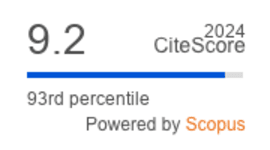Impact of Cyclosporine A on Cognitive Functions and Neuronal Oxidative Stress, Apoptosis and Inflammatory Markers in Rats
DOI:
https://doi.org/10.36877/pmmb.a0000445Abstract
Cyclosporine A (CYP-A), a potent immunosuppressive agent, significantly impacts organ transplantation and the treatment of autoimmune disorders, and its ability to control autoimmune reactions and prevent organ rejection has made it indispensable in contemporary medicine. However, its negative effects, such as nephrotoxicity, neurotoxicity, and hepatotoxicity, limit its usefulness. The study investigated the effects of CYP-A on cognitive and neurological functions in rats over a fifteen-day period. Four groups of six rats each were treated with normal saline (control) or varying doses of CYP-A (20, 50, and 100 mg/kg). Behavioural assessments included the elevated plus maze (EPM) and novel object recognition (NOR) tests used to evaluate memory capabilities and recognition memory respectively, and the Y-maze assessed the exploration of a new environment and navigational skills. Post-experiment, brain tissues were analyzed for apoptosis, neuroinflammation, and oxidative stress markers to assess potential neurotoxicity. Histopathological analysis was also performed to provide further insights into CYP-A's effects on brain tissue. Compared to the control rats, there were significant changes in the memory parameters with two higher doses (50 and 100 mg/kg). The findings indicated that MDA, TNF-α, NF-κB, PGE2, and Caspase-3 levels increased significantly in the CYP-A 100 treatment compared to the control animals. However, a significant drop was observed in CAT, and GSH when comparing the CYP-A 100 group to the control rats. Conversely, comparable alterations were also noted in MDA, TNF-α, PGE2, Bcl-2, Bax, and Caspase-3 levels between the CYP-A 100 and other treatment groups (20 or 50 mg/kg). Moreover, the histopathological analysis revealed that as compared to the control rats, CYP-A at three different dose levels (20, 50, or 100 mg/kg, p.o.) exhibited various changes. It was noticed that as the dose levels of CYP-A increased, there was a corresponding increase in brain tissue architectural changes. Precisely, the group treated with 100 mg/kg exhibited severe haemorrhages, inflammation, necrosis, and congestion compared to the control animals. In conclusion, CYP-A induces neurotoxicity, leading to oxidative stress, neuroinflammation, apoptosis, and cognitive deficits. Understanding the underlying mechanisms of this neurotoxicity is crucial to mitigating the adverse effects of CYP-A and improving patient outcomes. Further research is needed to develop targeted therapies and enhance the safe use of CYP-A.
Downloads
Published
How to Cite
Issue
Section
License
Copyright (c) 2024 Awyed Batah Almutairi, Abdulaziz Arif A. Alshammari, Arshad Husain Rahmani, Ali Yousif Babiker, Long Chiau Ming, Maha A. Aldubayan, Ahmad H. Alhowail, Vasudevan Mani

This work is licensed under a Creative Commons Attribution-NonCommercial 4.0 International License.
Author(s) shall retain the copyright of their work and grant the Journal/Publisher right for the first publication with the work simultaneously licensed under:
Creative Commons Attribution-NonCommercial 4.0 International (CC BY-NC 4.0). This license allows for the copying, distribution and transmission of the work, provided the correct attribution of the original creator is stated. Adaptation and remixing are also permitted.

This broad license intends to facilitate free access to, as well as the unrestricted reuse of, original works of all types for non-commercial purposes.
The author(s) permits HH Publisher to publish this article that has not been submitted elsewhere.



.png)

.jpg)
